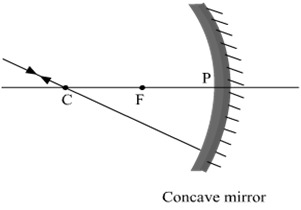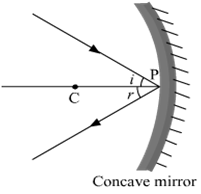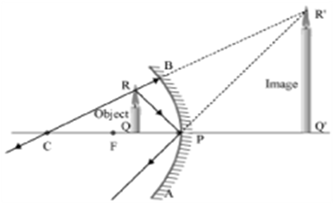 Short Answer Type
Short Answer TypeA gas is liberated immediately with a brisk effervescence when you add acetic acid to sodium hydrogen carbonate powder in a test tube. Name the gas and describe the test that confirms the identity of the gas.
Name the type of asexual reproduction in which two individuals are formed from a single parent and the parental identity is lost. Write the first step from where such a type of reproduction begins. Draw first two stages of this reproduction.
A student places a candle flame at a distance of about 60 cm from a convex lens of focal length 10 cm and focuses the image of the flame on a screen. After that, he gradually moves the flame towards the lens and each time focuses the image on the screen.
(a) In which direction-toward or away from the lens, does he move the screen to focus the image?
(b) How does the size of the image change?
(c) How does the intensity of the image change as the flame moves towards the lens?
(d) Approximately for what distance between the flame and the lens, the image formed on the screen is inverted and of the same size?
 Long Answer Type
Long Answer TypeSoaps and detergents are both types of salts. State the difference between the two. Write the mechanism of the cleansing action of soaps. Why do soaps not form lather (foam) with hard water? Mention any two problems that arise due to the use of detergents instead of soaps.
Analyse the following observation table showing a variation of image distance (v) with object distance (u) in the case of a convex lens and answer the questions that follow, without doing any calculations:
| S. No. |
Object distance |
Image distance |
| 1 | -90 | +18 |
| 2 | -60 | +20 |
| 3 | -30 | +30 |
| 4 | -20 | +60 |
| 5 | -18 | 90 |
| 6 | -10 | 100 |
(a) What is the focal length of the convex lens ? Give reason in support of your answer.
(b) Write the serial number of that observation which is not correct.How did you arrive at this conclusion?
(c) Take an appropriate scale to draw a ray diagram for the observation at S. No. 4 and find the approximate value of magnification.
To construct a ray diagram we use two rays which are so chosen that it is easy to know their directions after reflection from the mirror. List two such rays and state the path of these rays after reflection in case of concave mirrors. Use these two rays and draw ray diagram to locate the image of an object placed between pole and focus of a concave mirror.
Two light rays whose path of reflection are priorly know are:
(i) The incident ray passes through the centre of curvature: In this case, light ray after reflecting from the concave mirror moves back in the same path. This happens because the light ray is incident perpendicularly on the mirror surface.
(ii) The ray incident obliquely to the principal axis: In this case, the incident ray will be reflected back by the reflecting surface of the concave mirror obliquely and making equal angles with the principal axis.
Let an object 'a candle' is placed between the focus and pole of the concave mirror. Then using above two rays, image of the candle can be located as shown below:
